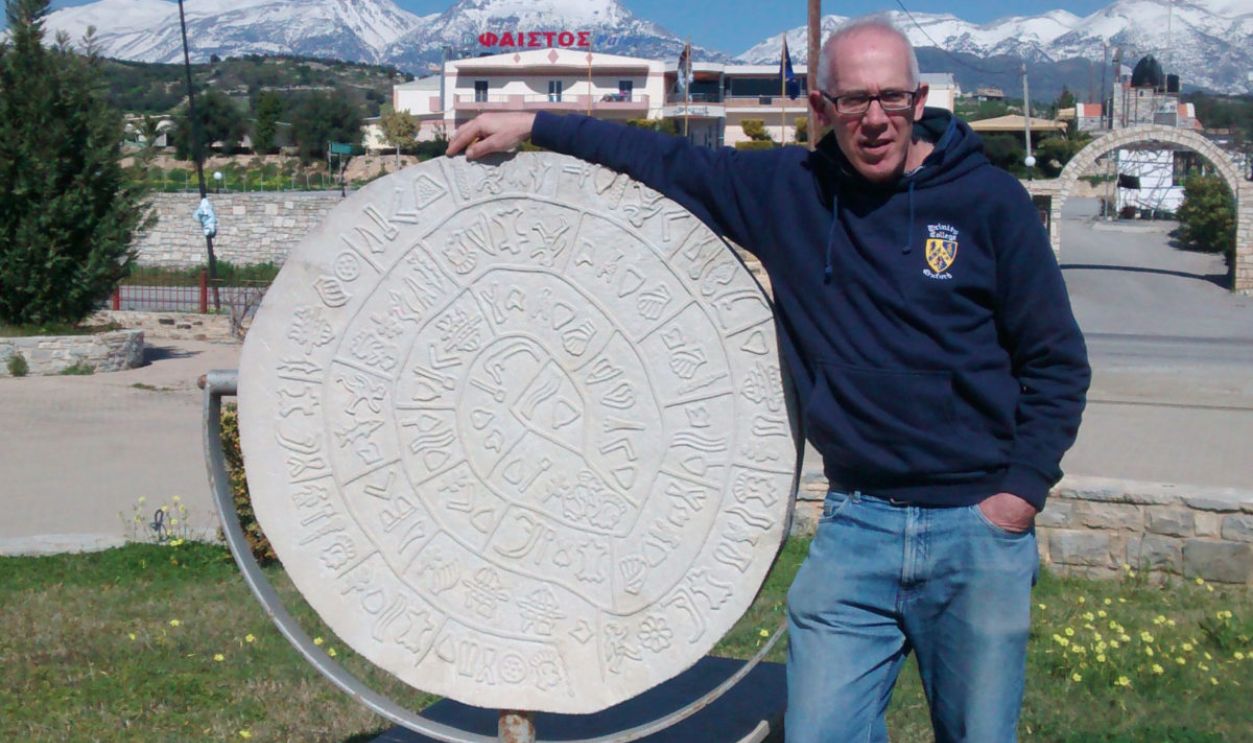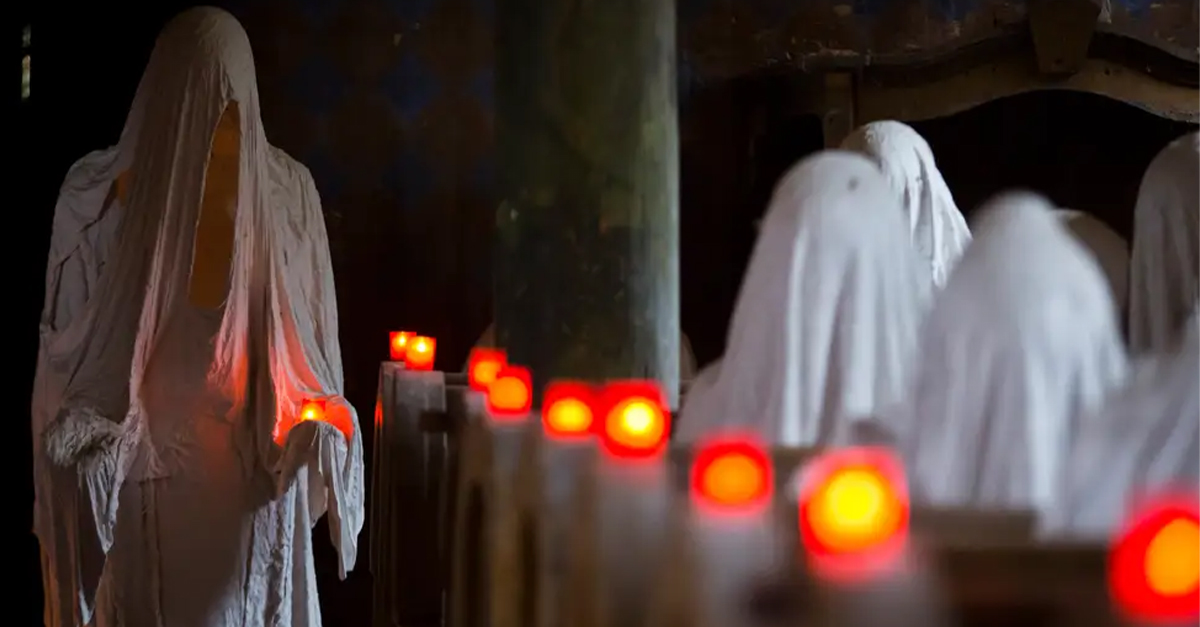Sleepless Nights Chasing Information
Sometimes, anthropologists unearth the weirdest heirlooms society ever owned. They pick samples and read past articles to try and understand the story behind each piece. Here’s a list of the 22 artifacts that baffled humanity.

Antikythera Mechanism
The Antikythera Mechanism was found chilling in a shipwreck near Greece. What seemed like a typical crush boat device was an ancient device often called the "world's first computer". The wow factor is that it dates back to 150 BCE and could accurately predict celestial events.
 Joyofmuseums, CC BY-SA 4.0, Wikimedia Commons
Joyofmuseums, CC BY-SA 4.0, Wikimedia Commons
Antikythera Mechanism (Cont.)
What makes the Antikythera Mechanism even more intriguing is its design. It contains over 30 interlocking bronze gears, which is the part that gives astrologers and engineers sleepless nights. Some suggest it was built by an unknown genius whose knowledge surpassed the era's norm.
 Marsyas, CC BY-SA 3.0, Wikimedia Commons
Marsyas, CC BY-SA 3.0, Wikimedia Commons
Phaistos Disc
This enigmatic clay disc, unearthed in Crete in 1908, has 45 unique symbols pressed into its surface in a spiral. Thought to be from 1700 BCE, no one has deciphered its purpose yet. Could it be an ancient message, a game, or even an early printing press?
 C messier, edit by Bammesk, CC BY-SA 4.0, Wikimedia Commons
C messier, edit by Bammesk, CC BY-SA 4.0, Wikimedia Commons
Phaistos Disc (Cont.)
Each symbol on the Phaistos Disc appears meticulously stamped, and this implies intentionality and significance. It’s such a mystery that scholars have attempted to decode it using multiple disciplines—linguistic, astronomical, and even mystical lenses. Did they find an answer? Nope.
 C messier, CC BY-SA 4.0, Wikimedia Commons
C messier, CC BY-SA 4.0, Wikimedia Commons
Nazca Lines
Across the Peruvian desert, you’ll find these massive geoglyphs in the form of animals, plants, and geometric shapes. Carbon dating suggests they were created between 500 BCE and 500 CE, but their scale and precision beg the question: how were they made without modern tools?
 Diego Delso, CC BY-SA 4.0, Wikimedia Commons
Diego Delso, CC BY-SA 4.0, Wikimedia Commons
Nazca Lines (Cont.)
They are so huge you can spot them from the air, and their construction has fueled wild theories, including extraterrestrial involvement. The truth may lie in their cultural significance to the Nazca people, who may have created them as ceremonial pathways. Either way, their grandiose appearance is still a puzzle.
 Diego Delso, CC BY-SA 4.0, Wikimedia Commons
Diego Delso, CC BY-SA 4.0, Wikimedia Commons
Stone Spheres Of Costa Rica
Riddle me this? (And a few more scientists) What lies in Costa Rica that’s smooth, perfectly spherical, and believed to be crafted by the Diquís? That’s the Stone Spheres. These stones range from a few inches to over 7 feet in diameter. Their purpose? No one knows, but legends suggest…
 Rodtico21, CC BY-SA 3.0, Wikimedia Commons
Rodtico21, CC BY-SA 3.0, Wikimedia Commons
Stone Spheres Of Costa Rica (Cont.)
…that these spheres held mystical powers or were treasures of a lost civilization. While their original context has faded, their craftsmanship amazes modern observers. Imagine creating such perfection with only rudimentary tools—indeed, a feat of determination and skill.
 Mariordo, CC BY-SA 4.0, Wikimedia Commons
Mariordo, CC BY-SA 4.0, Wikimedia Commons
Roman Dodecahedrons
Dating back to the 2nd or 3rd century CE, these twelve-sided bronze objects are scattered across Europe. Their function puzzles archaeologists because why do they even exist? Were they tools, toys, or perhaps religious artifacts? Their deliberate design implies utility, but for what remains a mystery.
 Kleon3, CC BY-SA 4.0, Wikimedia Commons
Kleon3, CC BY-SA 4.0, Wikimedia Commons
Roman Dodecahedrons (Cont.)
Here is what adds the “b” in black: Each Dodecahedron features circular holes of varying sizes. These have sparked theories of their use as candle holders or knitting aids. Despite dozens of discoveries, no written records explain them. Their mystery endures, and plenty are left just relying on imaginative speculation.
 Hunt Museum, CC0, Wikimedia Commons
Hunt Museum, CC0, Wikimedia Commons
Shroud Of Turin
This linen cloth, bearing the faint image of a man, has enthralled millions since its first recorded appearance in 1354. Many believed this was Jesus Christ’s burial shroud, and carbon dating suggests it was of medieval origin. So, is it holy or a hoax?
 Secundo Pia, Wikimedia Commons
Secundo Pia, Wikimedia Commons
Shroud Of Turin (Cont.)
The Shroud's intricate details are the star of the show. They include bloodstains that align with crucifixion wounds, adding to its allure. Despite scientific scrutiny, its authenticity remains unresolved. Faith and science clash here, and they fuel the endless debate surrounding this revered relic.
 Secondo Pia, Wikimedia Commons
Secondo Pia, Wikimedia Commons
Voynich Manuscript
Many call it the “world’s most mysterious book”. It is a 15th-century manuscript written in an unknown script researchers are unaware of. Its pages brim with bizarre illustrations of plants, astrological symbols, and cryptic diagrams. Is it a coded message, a hoax, or the ramblings of a random person?
 Unknown Author, Wikimedia Commons
Unknown Author, Wikimedia Commons
Voynich Manuscript (Cont.)
Attempts to crack its code have stumped linguists, mathematicians, cryptographers, and scientists for centuries. The saving grace? Modern AI has offered clues, but the manuscript's true purpose remains elusive. Perhaps it’s an intellectual puzzle left to challenge humanity across generations.
Baghdad Battery
This ancient artifact, which looks really close to a rudimentary battery, was discovered near Baghdad. The difference with today’s battery is that this one dates back to 250 BCE. Consisting of a clay jar, copper tube, and iron rod, it could generate a small electrical charge.
 Ironie, CC BY-SA 2.5,Wikimedia Commons
Ironie, CC BY-SA 2.5,Wikimedia Commons
Baghdad Battery (Cont.)
The theories span from people believing it powered early electroplating techniques to it having a ceremonial purpose. Either way, its mere existence challenges our understanding of ancient technological capabilities. Could we be underestimating the ancients? Perhaps these folks were smarter than we thought.
 J J Osuna Caballero, Shutterstock
J J Osuna Caballero, Shutterstock
Sacsayhuamán Walls
These massive stone walls in Cusco, Peru, are precisely engineered, and researchers can’t explain them. Built by the Inca around 1438, the stones fit together so tightly that not even a blade of grass can pass between them. No mortar was used—how is that possible?
 Diego Delso, CC BY-SA 4.0, Wikimedia Commons
Diego Delso, CC BY-SA 4.0, Wikimedia Commons
Sacsayhuamán Walls (Cont.)
The Sacsayhuamán Walls’s stones weigh up to 200 tons, and the methods used to transport and place them leave a lot to wonder. Theories range from advanced tools to sheer manpower. Whatever the truth is, these walls show us that human ingenuity and determination are limitless.
 Bcasterline, Wikimedia Commons
Bcasterline, Wikimedia Commons
Copper Scroll
Bounty hunters and pirates after treasures, gather here because among the Dead Sea Scrolls lies this outlier: A copper document listing 64 hidden treasure locations. It was founded in 1952, and its contents are tantalizing yet unverified. Are the treasures real, or is it an ancient riddle meant to mislead?
Copper Scroll (Cont.)
Unlike other Dead Sea Scrolls, this artifact isn’t a religious text but a metallic medium. Its copper nature suggests durability, hinting that its creators intended its message to reach its designated. The treasures it describes, however, remain an enigma as its creators' intent.
 Osama Shukir Muhammed Amin, CC BY-SA 4.0, Wikimedia Commons
Osama Shukir Muhammed Amin, CC BY-SA 4.0, Wikimedia Commons
The Tomb Of The Sunken Skulls
Unearthed in Sweden’s Kanaljorden area, this burial site contains human skulls mounted on stakes, and they date back to 6000 BCE. The site’s eerie arrangement has sparked theories of ritualistic practices or even early forms of conflict resolution or revenge.
The Tomb Of The Sunken Skulls (Cont.)
The intriguing part is that these skulls are inside a waterlogged tomb. What? This is a unique piece of information that is typical of prehistoric Europe. It opens a dark chapter to ancient history. Archaeologists suggest it might symbolize a tribute to the dead or serve as a warning to enemies.
The Crystal Skulls
Scattered across the world, these life-sized skulls are rumored to be ancient Mesoamerican treasures. The few who have had the pleasure of studying them claim they hold mystical powers or have extraterrestrial origins. Others argue they’re clever forgeries from the 19th century. What’s the real story?
 British Museum, CC BY-SA 3.0, Wikimedia Commons
British Museum, CC BY-SA 3.0, Wikimedia Commons
The Crystal Skulls (Cont.)
If anything is doubtful in science, the labs come to the rescue. They did here as well because modern lab testing shows they may have been crafted with tools unavailable to ancient civilizations. So, all the idea of them being a forgery goes out the window.
 sayamindu, CC BY-SA 2.0, Wikimedia Commons
sayamindu, CC BY-SA 2.0, Wikimedia Commons
The Bimini Road
Imagine a road but submerged. That’s the Bimini Road submerged near the Bahamas. This underwater formation looks really similar to a man-made road of massive limestone blocks. It was discovered in 1968, and some believe it’s evidence of Atlantis.
 Bimini Road by New England Aquarium
Bimini Road by New England Aquarium
The Bimini Road (Cont.)
The scientists privileged to study this road suggest the formations are naturally occurring; however, their precise alignment keeps a cloud of questions floating. Atlantis enthusiasts see it as a breadcrumb leading to the fabled city, and it has sparked fascination among divers and historians alike. A road under the sea?
 Original picture by NASA, Wikimedia Commons
Original picture by NASA, Wikimedia Commons
The Kensington Runestone
This 200-pound slab inscribed with Norse runes was found in Minnesota in 1898. If it turns out to be genuine, it would rewrite history, suggesting Vikings explored North America long before Columbus. But is it authentic or an elaborate joke someone thought would be a good prank?
 DrReload, CC BY 4.0, Wikimedia Commons
DrReload, CC BY 4.0, Wikimedia Commons
The Kensington Runestone (Cont.)
In this case, linguists and historians are divided over the Runestone’s authenticity. Skeptics find inconsistencies in the language, and believers cite historical evidence of Viking expeditions to North America. Regardless, its discovery keeps the debate alive.
 Mauricio Valle, CC BY-SA 4.0, Wikimedia Commons
Mauricio Valle, CC BY-SA 4.0, Wikimedia Commons
The Sanxingdui Artifacts
These heirlooms were found in China’s Sichuan province. They are bronze masks and statues historians purport were made in 1200 BCE. The biggest question marks? Their unique style and craftsmanship. They deviate completely from other ancient Chinese relics. For this reason, scholars ponder the origins.
 Tyg728, CC BY-SA 4.0, Wikimedia Commons
Tyg728, CC BY-SA 4.0, Wikimedia Commons
The Sanxingdui Artifacts (Cont.)
The artifacts are not only bronze, but they also include gold masks, intricate jade pieces, and large bronze sculptures. Their advanced techniques and the fact that they suddenly disappeared suggest a forgotten cultural powerhouse. Who were these people, and why did their civilization vanish? The mystery endures.
 Gary Todd, CC0, Wikimedia Commons
Gary Todd, CC0, Wikimedia Commons
The Codex Gigas
Most know it as the "Devil's Bible", a massive 13th-century manuscript containing the entire Latin Bible and various other texts. It also includes a full-page illustration of Satan. Legends claim it was written overnight by a monk who made a pact with the devil.
 Michal Maňas, CC BY 2.5, Wikimedia Commons
Michal Maňas, CC BY 2.5, Wikimedia Commons
The Codex Gigas (Cont.)
Its extraordinary size and eerie content fuel its sinister reputation. Still, it intrigues many scholars, who marvel at its impeccable handwriting, suggesting decades of work. Could one person have created this piece, or is there a darker tale hidden within its pages?
 Benedictine monastery of Podlažice, Wikimedia Commons
Benedictine monastery of Podlažice, Wikimedia Commons
The Star Chart Of Dunhuang
We know the Chinese are big on astrology, but when this ancient Chinese map of the stars, dating to 700 CE, was found, it solidified these claims. Apparently, it is the oldest known example of its kind, found in the Mogao Caves.
 Sagittarius, Wikimedia Commons
Sagittarius, Wikimedia Commons
The Star Chart Of Dunhuang (Cont.)
Guess what? It charts over 1,300 stars with surprising accuracy, and it reflects advanced astronomical knowledge, possibly used for navigation or astrology. Its craftsmanship highlights humanity’s enduring curiosity about the cosmos. Perhaps it’s a reminder of how early civilizations reached for the stars—literally.
 Unknown Author, Wikimedia Commons
Unknown Author, Wikimedia Commons
The London Hammer
The London Hammer is encased in rock and is estimated to be over 400 million years old. This hammer was discovered in Texas in 1936, and it looks like a 19th-century mining tool, yet its geological context suggests an impossible age. It's so crazy that others purport it's a time travel piece.
 S. J. Miba, CC BY-SA 4.0, Wikimedia Commons
S. J. Miba, CC BY-SA 4.0, Wikimedia Commons
The London Hammer (Cont.)
Is it proof of time travel or misinterpretation? We might never know, but we do know that scientists propose that the rock formation may have encased the hammer through a natural process. Skeptics don’t agree. They find this explanation unsatisfying. Regardless, it challenges perceptions of geological timelines and human history.
 S. J. Miba, CC BY-SA 4.0, Wikimedia Commons
S. J. Miba, CC BY-SA 4.0, Wikimedia Commons
The Ulfberht Swords
These Viking-era swords, dating from 800 to 1000 CE, are made from pure metal that puzzles modern steel makers. Their advanced metallurgy baffles historians alike and breeds questions like whether the technology originated from distant lands or was independently developed.
 Dbachmann, CC BY-SA 4.0, Wikimedia Commons
Dbachmann, CC BY-SA 4.0, Wikimedia Commons
The Ulfberht Swords (Cont.)
These swords come marked with the mysterious inscription “+ULFBERH+T”. And they are, for sure, weapons that symbolize power and mastery. The Ulfberht Swords are made in a way that suggests a level of sophistication in trade and craftsmanship not previously attributed to the Vikings. This rewrites perceptions of their technological prowess.
 Toranaderivativec, CC BY-SA 3.0, Wikimedia Commons
Toranaderivativec, CC BY-SA 3.0, Wikimedia Commons
The Cochno Stone
The Cochno Stone was rediscovered in Scotland in 2015. It is a 5,000-year-old stone slab covered in intricate carvings, which include spirals and cup marks. Its purpose? It is still unknown and has many ponder; could it be an astronomical map, a ceremonial site, or ancient art?
 William A. Donnelly, Wikimedia Commons
William A. Donnelly, Wikimedia Commons
The Cochno Stone (Cont.)
Some believe the Cochno Stone records celestial events, while others see it as a prehistoric message board. Whatever the case, it’s one of Europe's most significant Neolithic artifacts. It offers tantalizing glimpses into an ancient world everyone is curious to know more about.
 James Harvey of Duntocher, Wikimedia Commons
James Harvey of Duntocher, Wikimedia Commons
The Golden Hat Of Schifferstadt
This ornate gold hat, dating to the Bronze Age, is believed to have served as a calendar or ceremonial object. Think crown or something of that sort. It was found in Germany and features detailed patterns corresponding to solar and lunar cycles.
 Dontworry, CC BY-SA 3.0, Wikimedia Commons
Dontworry, CC BY-SA 3.0, Wikimedia Commons
The Golden Hat Of Schifferstadt (Cont.)
The craftsmanship points to an advanced understanding of astronomy and symbolism. Scholars debate whether it belonged to a high priest, ruler, king, or healer. From its aesthetics, it’s a crown jewel of ancient Europe’s mysteries.
 Paul Hudson, CC BY 2.0, Wikimedia Commons
Paul Hudson, CC BY 2.0, Wikimedia Commons
The Saqqara Bird
The Saqqara Bird was found in an Egyptian tomb back in 1898. Unlike most, this is wooden, resembling a bird with aerodynamic features. Lab tests suggest it’s a 200 BCE relic. Some theorize it could be an early attempt at a flying machine, while others believe it was religious.
 Dawoudk, CC BY-SA 3.0, Wikimedia Commons
Dawoudk, CC BY-SA 3.0, Wikimedia Commons
The Saqqara Bird (Cont.)
No species looks like it: Its design includes a vertical tail, sparking debates about its purpose. While skeptics dismiss flight-related theories, the artifact shows that creativity and engineering had ancient roots. You never know; we might be wrong, and it was just a toy. Until it's definitive, it remains speculative.
 Dawoud Khalil Messiha, Wikimedia Commons
Dawoud Khalil Messiha, Wikimedia Commons











